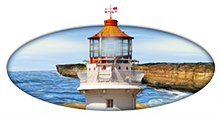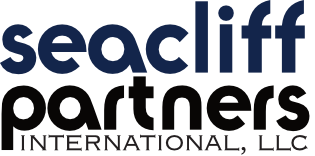The Working Group on California Earthquake Probabilities has concluded the probability of a magnitude 6.7 or larger earthquake over the next 30 years striking the greater Los Angeles area is 67%, and in the San Francisco Bay Area it is 63%. For the entire California region, the fault with the highest probability of generating at least one magnitude 6.7 quake or larger is the southern San Andreas (59% in the next 30 years). For northern California, the most likely source of such earthquakes is the Hayward-Rodgers Creek Fault (31% in the next 30 years). Events of this size can be deadly, as shown by the 1989 Loma Prieta earthquake (magnitude 6.9) and 1994 Northridge earthquake (magnitude 6.7). Other geographies around the Pacific Ring of Fire and the Mediterranean Seismic Zone are also poised for large earthquakes. When (not if) a large earthquake occurs, authorities predict that we may have to be self-sufficient for at least 72 hours.
Whether homeowner or small or medium business owner, it does not cost a lot to be prepared. The American Red Cross has a checklist for personal safety and security. Persons outside of the USA can use this checklist, or consult with local authorities for one tailored to their conditions. Here are some other actions that you can perform now to ensure that you are ready:
- Secure furniture and objects so that they cannot fall and be damaged, or worse, injure someone. This means filing cabinets, bookcases, PCs, monitors, televisions, etc. Sheetrock anchors might be ripped from the wall so bolt heavy objects to studs. Smaller objects should be secured to the desk or table they are on. Several companies make ready-to-use kits for this purpose.
- Ensure that you have copies of critical paper and electronic records stored in a safe location away from the originals. In addition to the information quoted by the Red Cross, this might include vendor, customer, and patient contact information. Don’t forget to keep a listing of any website passwords which might be filled in automatically by your web browser.
- There are many ways to protect applications and documents which are on your computer hard drive. You can copy them to tape, an external hard drive, or burn them to CD or DVD. Macintosh users can switch between two Time Machine disks ensuring that the disk not in use is securely stored. PC users should check with their manufacturer for options.
- A list of software, the date that your purchased it, and serial numbers will be invaluable if you purchase a replacement computer.
- Make a copy of important numbers which are stored in autodialing desk phones and mobile phones so that you will have access to them if the power goes out or the battery dies.
- To keep costs down, a small business owner can store home records at work, and work records at home.
- Don’t believe myths such as the ‘Triangle of Life’ and standing in the doorway during an earthquake* – both could injure you. You and your employees should know what you need to do before disaster strikes so that you don’t need to learn ‘on the fly.’ You should practice the “Drop, Cover, and Hold” method at work and at home at least twice a year.
It’s not that hard to be prepared and doesn’t need to cost a lot of money. And a lot of the work can help you get through other events such as a pandemic, power failure, flooding, or a building evacuation. For more information, you can visit the American Red Cross and the California Emergency Management Agency web sites. Seacliff Partners International, LLC is available to help you develop a plan customized to your specific needs.
* The stand in a doorway myth applies to modern structures – you should always consult with local authorities for personal protection during an earthquake. In past earthquakes in unreinforced masonry structures and adobe homes, the door frame may have been the only thing left standing in the aftermath of an earthquake. Hence, it was thought that safety could be found by standing in doorways. In modern homes doorways are no stronger than any other parts of the house and usually have doors that will swing and can injure you. You are safer practicing the “Drop, Cover, and Hold” maneuver under a sturdy piece of furniture like a strong desk or table. If indoors, stay there. Drop to the floor, make yourself small and get under a desk or table or stand in a corner. If outdoors, get into an open area away from trees, buildings, walls and power lines. If in a high-rise building, stay away from windows and outside walls, stay out of elevators, and get under a table. If driving, pull over to the side of the road and stop. Avoid overpasses and power lines. Stay inside your car until the shaking is over. If in a crowded public place, do not rush for the doors – you also could be trampled by others trying to escape. Crouch and cover your head and neck with your hands and arms.


